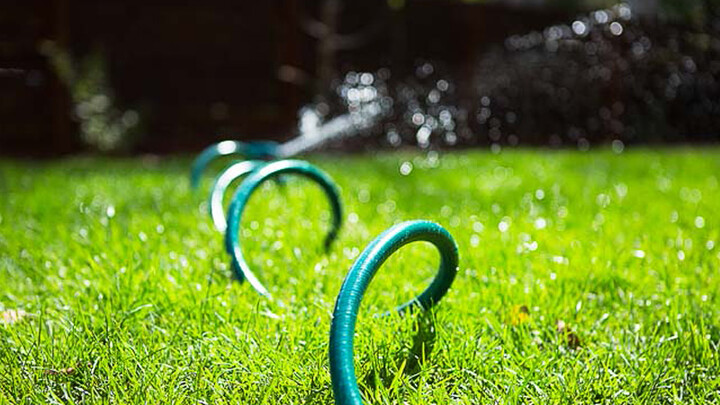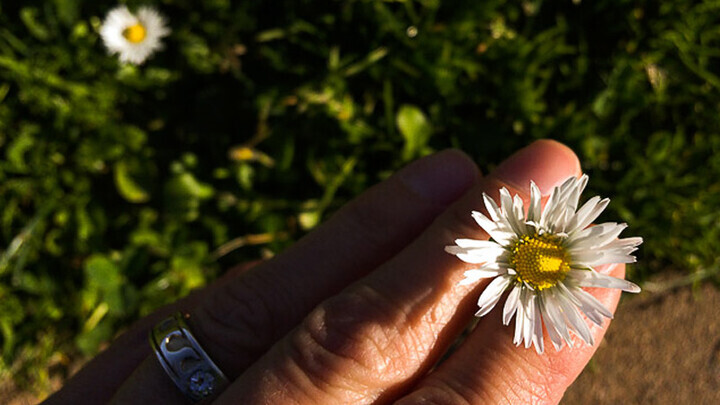Winter weather, foraging critters, and general wear and tear can take a toll on a lawn that, only a few months before, was wonderfully lush. If you find brown, bare patches amongst new growth or thinning of a once thick carpet of green, overseeding your lawn is a simple remedy that can help prevent future problems. In fact, if you apply an extra helping of seeds to lawn before it shows signs of thinning or damage, you’ll save time and effort down the road.
To start, all you need are the right temperatures, seed, and a simple watering solution, like a circular sprinkler. The best time to reseed an existing lawn in cooler, northern climates is spring or fall. If you’re in warmer regions of the south, plan to reseed in late spring to summer. Add this one easy step to your list of yard care chores to receive a host of benefits.
Reduce Erosion
Grasses have compact, fibrous root systems that do an exceptional job of binding together. So, a densely planted, overseeded lawn ensures soil and water stay where you want them to, right at the root zone, reducing run-off and soil loss. This ultimately improves the overall health of your lawn because it can hold onto nutrients and moisture needed to thrive.

Improve Appearance
If you’re going to dedicate space and time to a lawn, make it luscious. Fill in brown, balding patches and areas damaged by pets and pests by planting a fresh batch of seeds. Simply rough up the spots that need attention with a rake, cast your seeds, and keep soils evenly moist until seeds germinate. Using a sprinkler that’s easy to move around allows you to target watering. A densely planted lawn, no matter the size, is immediately more inviting. Not only is it pleasing to the eye, it feels fabulous underfoot.

Reduce Risk of Pests & Disease
A healthy lawn is your best solution for preventing and combating pests and disease. An easy change to make when cultivating the healthiest lawn possible is to water less frequently and for longer periods of time to encourage a strong, well-developed root system. Another solution is overseeding. If your lawn has a long history with particular pests, you don’t need to apply chemicals, instead look for seed varieties that grow well in your climate. It’s best to choose seeds that require the least amount of water and are highly disease resistant. A mix of grass seeds with lawn daisies (Bellis perennis) is another wonderful solution. They attract and support pollinators and beneficial insects.
Increase Thickness
If a thick carpet of lawn is what you’re after, overseeding can do this too. A well-timed serving of seeds and the right amount of water will transform a thinning lawn into a plush stretch of green. The blades of grass can no longer be counted but instead flow together to form a verdant surface. It immediately becomes more durable, withstanding foot traffic and play, as well as holding up to natural weathering and environmental stress.
No Chemicals Necessary
Maintaining a healthy, robust lawn means you don’t need to apply chemical fertilizers or pesticides to correct problems. When you maintain a healthy lawn with a few best practices like correct watering and overseeding, pests don’t have an opportunity to take hold.